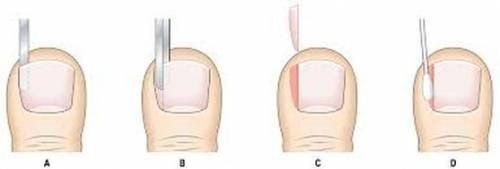NAIL SURGERY
Surgical procedures are commonly performed by podiatrists to treat recurrent nail problems such as ingrown nails. An ingrown toenail is a nail that has pierced or is pressing against the adjacent skin of the toe causing pain and inflammation and sometimes infection. Surgery may be required when an ingrown toenail repeatedly gets infected, is continually painful, the sufferer is unable to wear shoes or the condition inhibits work, sporting or other activities.
Nail Surgery Performed by Podiatrists
One of the most common nail procedures is partial nail avulsion. The procedure is usually performed in podiatrists rooms and the patient is able to walk immediately afterwards.
What Does a Partial Nail Avulsion Involve?
- The procedure is generally performed under local anaesthetic via injection into the toe to numb the area. The anaesthetic will most often wear off in about 2 hours.
- Once numb, a tight elastic ring called a tourniquet is applied to the toe to control bleeding and the area is prepped to minimise the risk of infection. The portion of nail to be removed is then gently lifted and resected, generally without the toe being cut or stitched. Both sides and even the entire nail be removed this way.
- A chemical is then used to help prevent nail regrowth. Once the procedure is completed, the tourniquet is removed and a sterile surgical dressing is applied. The patient is able to walk immediately afterwards, however assistance getting home is greatly recommended.
- Re-dressing of the toe at home and a few consultations with your podiatrist may be required following the procedure. Pain relief medications may be required, you should discuss this with your podiatrist.

What Are The Potential Complications?
All nail procedures have been associated with a slight chance of recurrence. Infection whilst the wound is healing can be an issue. Your podiatrist can advise you and help manage these and other complications that may occur. All surgical procedures have some risk of complication; however the procedure is associated with a low rate of complications. Again, you should always raise any concerns you may have with your podiatrist.

